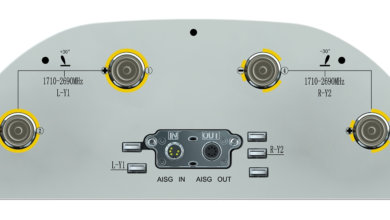ProGuard for Android: Optimizing Security and Performance

Android is a highly favored mobile operating system globally, with millions of applications accessible via the Google Play Store. But because of its immense popularity, it is also open to attack from malevolent parties. Proguard is one such product that guards Android applications against tampering, reverse engineering, and performance problems.
ProGuard enhancements
ProGuard Android implements a number of optimizations that make your code harder for other people to comprehend by confusingly renaming classes, methods, and fields. This increases performance.
- Getting to know ProGuard
To improve the security and speed of Android apps, ProGuard is an open-source Java class file shrinker, optimizer, and obfuscator made especially for Android developers. To make it more difficult for attackers to reverse engineer, ProGuard eliminates pointless code and renames classes, methods, and fields.
- Shrinkage of Code:
In order to significantly reduce the size of your app’s codebase and provide consumers with quicker download and installation times, ProGuard can locate and eliminate unnecessary classes, methods, and fields. Performance is also enhanced since ProGuard helps handle code with the highest risk levels first.
- Enhancement:
ProGuard makes current code more efficient via optimization, which improves runtime speed, lowers memory use, and improves user experience overall. Code obfuscation, or renaming classes, methods, and fields with vague and meaningless names to make it difficult for attackers to read and reverse engineer your code, is a crucial security strategy used by ProGuard to safeguard intellectual property.
- Breach of data:
By hiding code and erasing debugging data, ProGuard for Android apps enhances security and helps guard against tampering, illegal access, and data breaches. This defense may prevent reverse engineering assaults on your intellectual property, which can help keep hackers away.
- Reducing the App’s Size:
Users and developers alike may benefit from smaller APK files as they save money on hosting and distribution. ProGuard makes your software smaller by removing superfluous code from its source code.
How Does ProGuard Operate?
Configurable rules are kept in a file called proguard-rules. Pro is the basis for ProGuard’s operation. Based on the criteria stated inside, this file indicates what code should be kept, optimized, or obfuscated. When you create a new Android project in Android Studio, this default ProGuard configuration file is immediately generated.
- Best Practices for ProGuard:
Remember to adhere to these principles while building for Android in order to get the most out of ProGuard. ProGuard becomes better with each new version, adding new functions and improving existing ones. Keep yourself informed about ProGuard by checking the official website or repository often for updates.
- Verify That ProGuard Rules Are Current:
ProGuard rules may need to be updated if changes are made to the codebase of your application in order for them to correctly reflect the dependencies and structure of your program. Check to see whether their representation is true!
Problems and Errors:
Misconfigured ProGuard rules might cause your software to crash or behave strangely, so make sure you test it thoroughly after using ProGuard. All programs must function properly after installing ProGuard, which is why this testing is crucial.
When creating Android software, ProGuard
ProGuard is a code optimization, obfuscation, and downsizing tool that is often used by Android app developers to minimize APK size while increasing the difficulty for reverse engineers to decompile and comprehend the app’s code.
- Diminishment:
Use the shrinking tool provided by ProGuard to make your APK file smaller. It enables you to clear your code of superfluous fields, methods, and classes. This is especially useful for Android applications since smaller APK files are simpler to download and install.
- Transmission:
You may replace classes, methods, and fields with meaningless names using ProGuard’s Obfuscation tool to make it more difficult for attackers to decompile your APK and comprehend its logic. This not only prevents reverse engineering from happening, but it also protects intellectual property.
- Enhancement
ProGuard may optimize your code by carrying out tasks like inlining routines and removing dead code, in addition to lowering system resources and speeding up your application’s operation.
- Configuring ProGuard:
Make sure the guard rules. Profile is created in your application module so that you may modify ProGuard rules to suit your requirements. You may choose which classes, methods, and fields to retain or obfuscate using custom ProGuard rules by utilizing these custom rules.
- Debugging and Testing:
Once Proguard android is activated, make sure ProGuard doesn’t reduce or obscure code in a way that would jeopardize its operation. After enabling ProGuard, be careful to properly test your application to make sure that no unexpected behavior occurs from its code shrinking/obfuscation rules since certain activities requiring reflection may need special ProGuard rules in order to perform as intended.
Enhancing ProGuard Android
Finding a balance between code size reduction, security precautions, and preserving an application’s functionality is necessary for optimizing ProGuard. To get the most out of ProGuard for your Android app, consider these optimization pointers.
First, Granular Configuration
Be specific when defining rules to keep just essential code for best ProGuard utilization. Consider storing just the particular classes or methods that are necessary for your application, as opposed to complete packages or classes; this granular approach greatly lowers the danger of code bloat.
- Iteration and Testing:
After turning on ProGuard, make sure you test it extensively with a release build to identify any issues that may arise from code obfuscation or removal by ProGuard. Sometimes, this protection inadvertently deletes the code that is required for your app to work properly. Adjust your setup repeatedly based on the outcomes of these tests.
- Safeguarding External References:
To avoid runtime issues, make sure ProGuard is set up properly to keep all necessary classes and functions from external libraries that are a part of your project. If this isn’t done and you execute it, runtime problems could appear.
- Safeguard Vital Resources:
Make sure ProGuard rules are in place to safeguard any resources (XML layouts or drawables) that your program utilizes dynamically or via reflection so that they can’t be removed or altered. If not, they could be eliminated or completely hidden.
- Develop Unique ProGuard Regulations:
Customize ProGuard rules for your app’s particular requirements. Add custom ProGuard rules with particular applications in mind, such as protected classes, methods, or fields that ProGuard would incorrectly label as unnecessary. These personalized ProGuard rules may stop the rapid deletion of classes, methods, or fields that ProGuard could mistakenly flag as useless.
In summary
ProGuard is a useful tool for improving Android application speed and security. ProGuard enhances user experiences while safeguarding intellectual property by reducing APK sizes, streamlining code, and hiding programs. ProGuard should be configured correctly, tested thoroughly, updated on best practices and updates frequently, and kept informed about these things in order to be used to its full potential. When used well, however, it can become a vital tool for any Android developer, guaranteeing efficient and safe apps!





